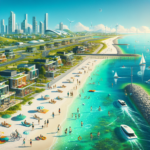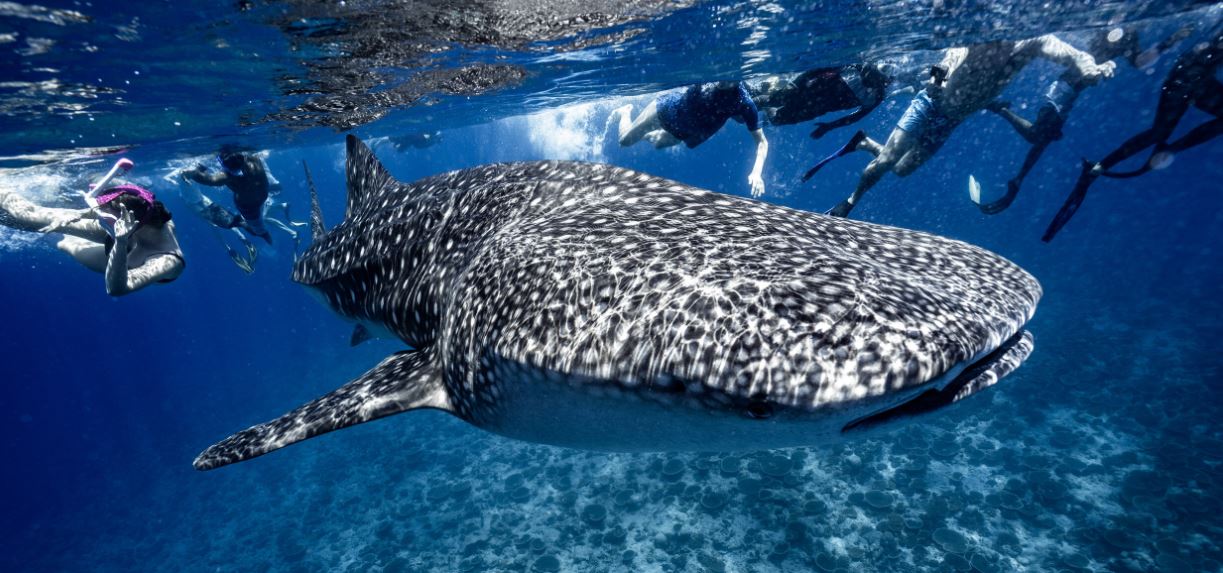
An Unforgettable Encounter with the Ocean's Gentle Giants and Diving with Whale Sharks in the Maldives:
Diving with whale sharks in the Maldives is not just an activity; it’s an exhilarating adventure that combines breathtaking marine life, stunning underwater landscapes, and the unique culture of the Maldives. This article will explore everything you need to know about this extraordinary experience, from historical insights to the best activities for couples and families, and even some nightlife recommendations. So, grab your snorkel gear and let’s dive in!
A Brief History of Diving with Whale Sharks in the Maldives:
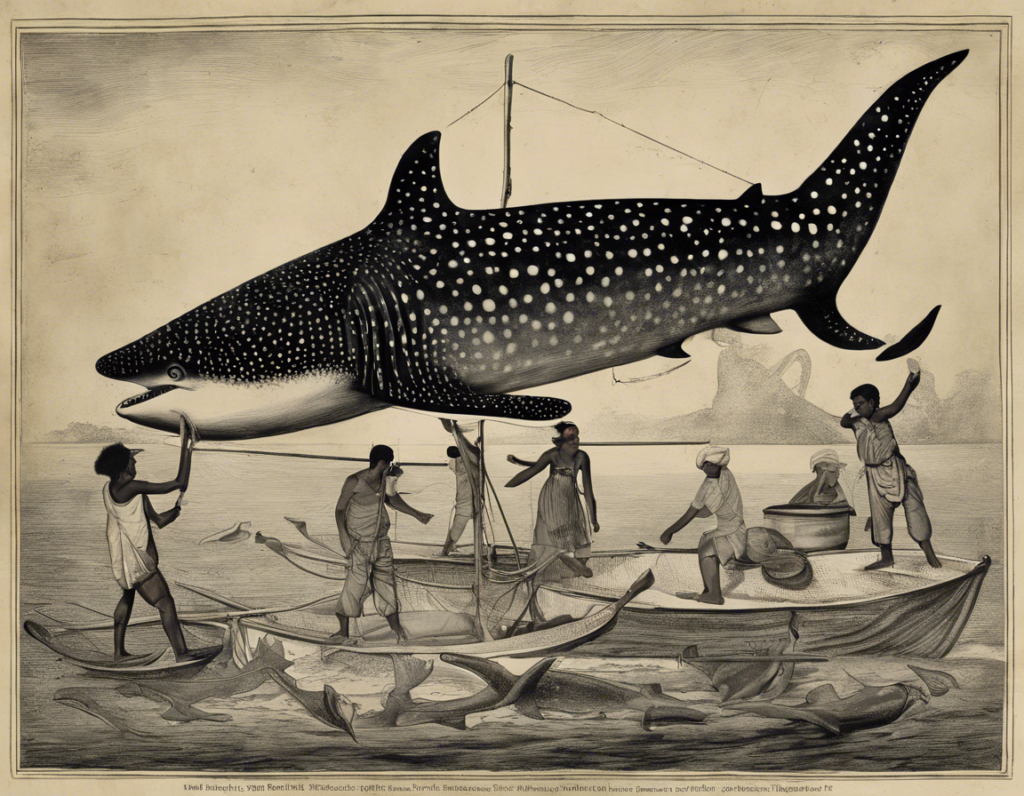
Whale sharks have been a part of Maldivian waters for centuries, but they gained international attention in the late 1990s when divers began documenting their presence. The Maamigili Beyru area in South Ari Atoll became a hotspot for whale shark sightings, attracting divers and snorkelers from around the world. These gentle giants are known to frequent plankton-rich waters, making the Maldives an ideal location for encounters year-round.
Diving with whale sharks in the Maldives has evolved significantly over the years, transitioning from a history of hunting to a focus on conservation and tourism. This journey reflects broader changes in societal values and environmental awareness.
Early History: From Hunters to Conservationists
Historically, whale sharks were hunted by Maldivian fishing communities for their fins and liver oil. The oil was particularly valuable for waterproofing fishing boats, known locally as dhonis. This practice posed a significant threat to whale shark populations, leading to a decline in their numbers. In response to growing concerns about the sustainability of this practice, the Maldivian government imposed a fishing ban on whale sharks in 1995. This ban marked a pivotal shift towards conservation, aiming to protect these gentle giants and promote alternative livelihoods for local communities through eco-tourism .
The Rise of Whale Shark Tourism
Following the ban, whale shark tourism began to flourish as an alternative source of income for local fishermen. The South Ari Atoll emerged as a prime location for sightings, particularly around Maamigili Beyru, where juvenile whale sharks can be spotted year-round. The Maldives Whale Shark Research Programme (MWSRP) was established to study and monitor these creatures, providing valuable data that supports conservation efforts .
The MWSRP has documented over 10,000 encounters with whale sharks, contributing significantly to our understanding of their behavior, population dynamics, and habitat use. This research is crucial for developing effective conservation strategies and ensuring that tourism practices are sustainable .
Current Challenges and Ethical Considerations
Despite the positive strides made in whale shark conservation, challenges remain. The rapid growth of whale shark tourism has led to concerns about the ethical treatment of these animals. Tour operators often prioritize customer satisfaction over the well-being of the sharks, leading to instances where guidelines are ignored. For example, divers are supposed to maintain a distance of at least three meters from the sharks and avoid touching them; however, violations of these rules have been reported .
To address these issues, there is an ongoing push for better regulation and training for tour operators. Learning from successful models in other countries, such as Mexico’s whale shark tourism regulations that limit the number of people in the water at a time and mandate proper training for guides, could help improve practices in the Maldives .
The Future of Whale Shark Diving in the Maldives
As awareness grows regarding the importance of protecting whale sharks and their habitats, there is hope for a more sustainable future. The Maldivian government is currently re-evaluating its approach to whale shark conservation by shifting oversight from fisheries management to environmental protection agencies. This change aims to enhance protections under Maldivian law and ensure that local communities can benefit economically from responsible tourism while safeguarding these magnificent creatures .
In conclusion, diving with whale sharks in the Maldives has transformed from a history steeped in exploitation to one focused on conservation and responsible tourism. As research continues and regulations improve, there is potential for this unique experience to thrive sustainably, allowing future generations to enjoy encounters with these gentle giants while ensuring their survival in the wild.
Why Dive with Whale Sharks?
Diving with whale sharks is an extraordinary experience that draws adventurers and marine enthusiasts from around the globe. These gentle giants, the largest fish in the ocean, offer a unique opportunity for close encounters with one of nature’s most magnificent creatures. Here are several compelling reasons to consider diving with whale sharks, particularly in the Maldives.
1. A Unique Encounter with Gentle Giants
Whale sharks can grow up to 18 meters (59 feet) long, yet they are known for their docile nature. Unlike many other shark species, they pose no threat to humans, making them safe companions for divers and snorkelers. The chance to swim alongside these massive creatures is often described as a once-in-a-lifetime experience, making it a highlight of many travelers’ adventures.
2. Biodiversity and Marine Health Indicators
Whale sharks thrive in nutrient-rich waters, primarily feeding on plankton. Their presence in an area is a strong indicator of a healthy marine ecosystem. By diving with whale sharks, you not only get to enjoy their beauty but also contribute to the awareness of marine conservation efforts. Observing these creatures helps underscore the importance of protecting their habitats.
3. Educational Opportunities
Diving with whale sharks offers an educational experience like no other. Many dive operators provide insights into the biology and behavior of these fascinating animals. For example, whale sharks have unique adaptations, such as dermal denticles that protect their skin and aid in hydrodynamics. Learning about these features enhances your appreciation for marine life and the complexities of ocean ecosystems.
4. Adventure and Thrill
The excitement of spotting a whale shark is palpable. Imagine being on a boat surrounded by other eager divers and snorkelers, scanning the water for signs of these magnificent creatures. When a whale shark is spotted, the thrill escalates as everyone rushes into the water to catch a glimpse. This adrenaline-fueled adventure creates unforgettable memories and stories to share.
5. Stunning Underwater Landscapes
The Maldives is renowned for its crystal-clear waters and vibrant coral reefs, providing a stunning backdrop for your diving experience. Encountering whale sharks amidst colorful marine life enhances the beauty of the dive, making it not just about the sharks but also about exploring rich underwater landscapes filled with diverse species.
6. Support for Conservation Efforts
Participating in whale shark tourism contributes to conservation initiatives aimed at protecting these species and their habitats. Many dive operators donate a portion of their profits to research and conservation programs focused on whale sharks and marine ecosystems. By choosing responsible operators, divers can play a role in preserving these majestic creatures for future generations.
7. Flexible Diving Options
Whether you’re an experienced diver or a beginner snorkeler, there are options available for everyone. Many locations in the Maldives offer both diving and snorkeling opportunities with whale sharks, allowing you to choose the level of engagement that suits your comfort and skill level.
8. Cultural Experiences
Diving with whale sharks can also be an opportunity to engage with local cultures and communities in the Maldives. Many dive centers are run by locals who share their knowledge about marine life while providing insights into Maldivian traditions and lifestyles.
9. Capturing Memories
The chance to photograph or film your encounter with whale sharks is another exciting aspect of this experience. With their impressive size and unique patterns, capturing images of these gentle giants can be incredibly rewarding—though it may require some skill due to their size and movement in the water.
10. A Sense of Connection
Finally, diving with whale sharks fosters a deeper connection to nature and marine environments. Witnessing these majestic creatures up close can inspire a sense of wonder and appreciation for our oceans, motivating individuals to advocate for marine conservation efforts.
Diving with whale sharks in the Maldives is more than just an adventure; it’s an opportunity to connect with nature, learn about marine ecosystems, and support conservation efforts while experiencing one of life’s most awe-inspiring encounters. Whether you’re swimming alongside these gentle giants or simply enjoying the vibrant underwater world they inhabit, this experience is sure to leave you with lasting memories and a renewed passion for ocean conservation.
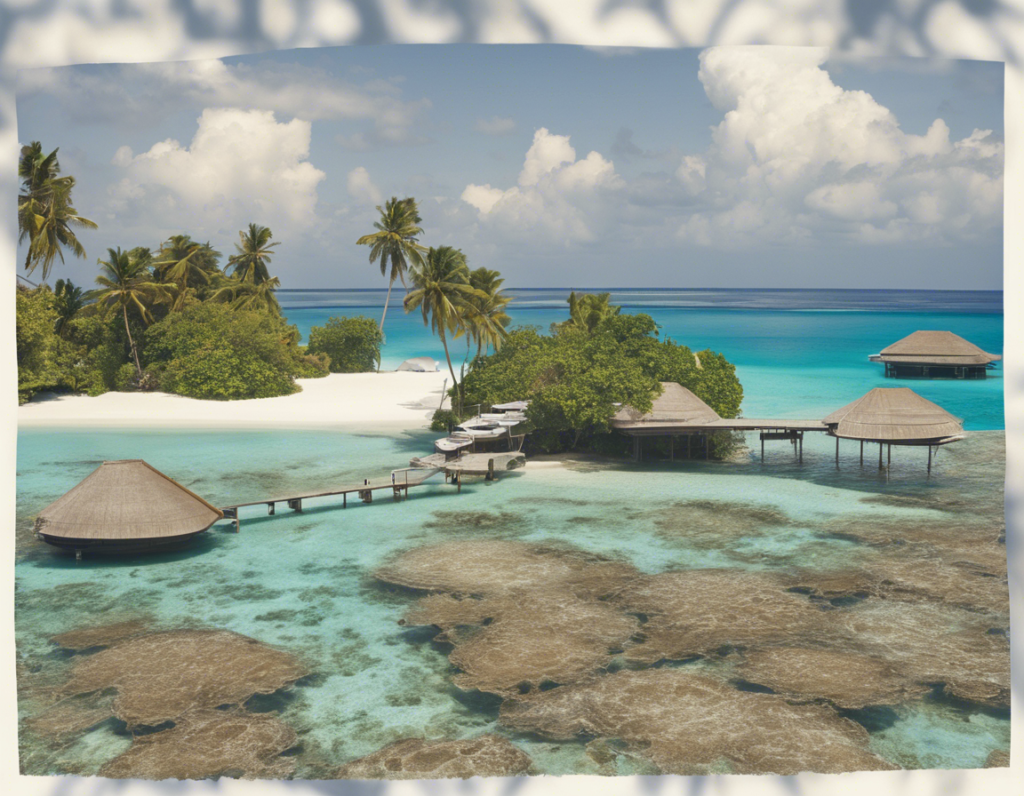
Best Time to Dive with Whale Sharks in the Maldives:
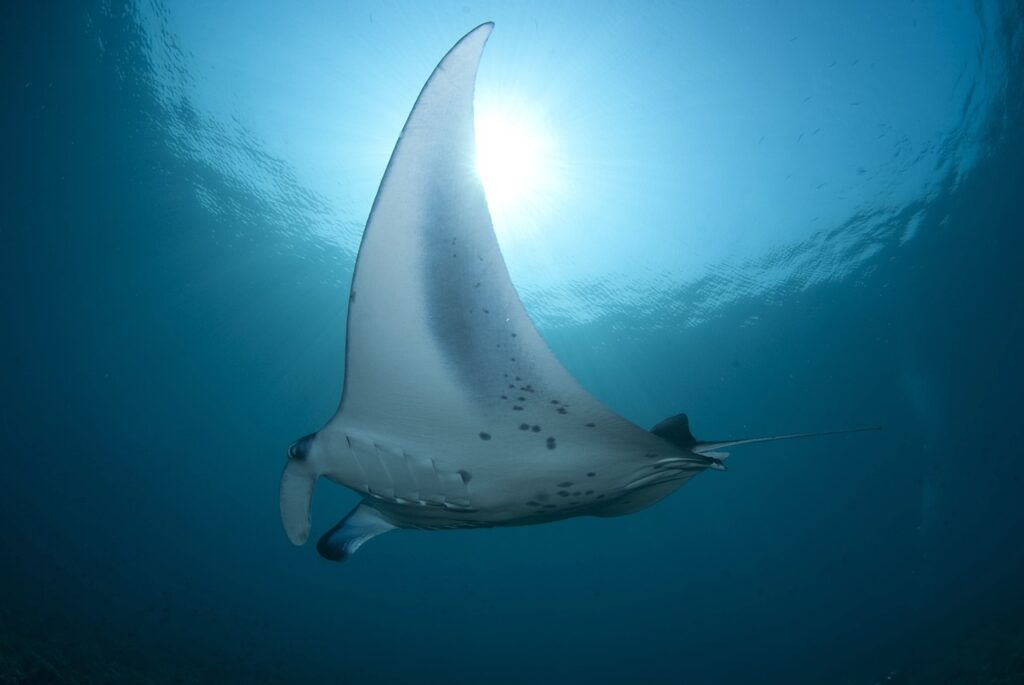
Diving with whale sharks in the Maldives is a dream for many marine enthusiasts, offering a unique opportunity to encounter the largest fish in the ocean. Understanding the best times to dive can enhance your chances of spotting these gentle giants and enjoying optimal underwater conditions. Here’s a detailed look at when to dive with whale sharks in the Maldives, based on seasonal patterns, specific locations, and environmental factors.
Year-Round Opportunities
The Maldives is unique in that whale sharks can be spotted year-round, making it one of the few places globally where you can reliably encounter these magnificent creatures at any time. However, specific locations and seasonal variations can significantly impact your experience.
South Ari Atoll:
Best Time: All year round.
This atoll is renowned as the primary hotspot for whale shark sightings. The waters here are rich in plankton, providing a consistent food source that attracts whale sharks throughout the year. The Maldivian government has designated South Ari Atoll as a protected marine area, ensuring the safety and well-being of these creatures while promoting sustainable tourism practices .
Baa Atoll (Hanifaru Bay):
Best Time: May to November.
Hanifaru Bay manta rays is famous for its seasonal congregation of whale sharks and , particularly during the southwest monsoon when nutrient-rich waters flow into the bay. This influx of plankton creates ideal feeding conditions, drawing large numbers of whale sharks into this area .
Other Atolls:
Occasional Sightings: Faafu Atoll, Dhaalu Atoll, Gaafu Alifu, and Gaafu Dhaalu Atolls may have sporadic sightings throughout the year but require more luck due to less predictable plankton movements .
Peak Months for Sightings
While whale sharks can be seen throughout the year, certain months are particularly favorable for sightings:
August to November: This period is often cited as peak season for whale shark encounters in South Ari Atoll, coinciding with increased plankton availability due to monsoon currents .
July to October: Ideal for visiting Hanifaru Bay, where both manta rays and whale sharks gather in large numbers .
Environmental Factors Influencing Sightings
Several environmental factors play a crucial role in determining when and where you can dive with whale sharks:
Monsoon Seasons: The Maldives experiences two main monsoon seasons—southwest (May to October) and northeast (November to April). The southwest monsoon brings nutrient-rich waters that attract plankton, leading to increased whale shark activity during this time.
Plankton Blooms: Whale sharks are filter feeders that rely on plankton as their primary food source. The presence of plankton blooms directly correlates with increased sightings. The best times for these blooms typically align with monsoon seasons .
Optimal Conditions for Diving
In addition to timing your visit correctly, consider the following factors for an enjoyable diving experience:
Water Clarity: The clearest waters are usually found from January to March, providing excellent visibility for snorkeling and diving. While this period may not coincide with peak whale shark sightings, it offers ideal conditions for underwater photography and exploration .
Weather Considerations: Traveling during shoulder seasons (April and November) can also be beneficial as they often feature pleasant weather and fewer tourists.
In summary, while you can dive with whale sharks in the Maldives year-round, planning your trip around specific seasons and locations will enhance your chances of encountering these majestic creatures. For the best experience, aim for South Ari Atoll from August to November or Hanifaru Bay from May to November. Regardless of when you visit, the opportunity to swim alongside these gentle giants is sure to be an unforgettable adventure!
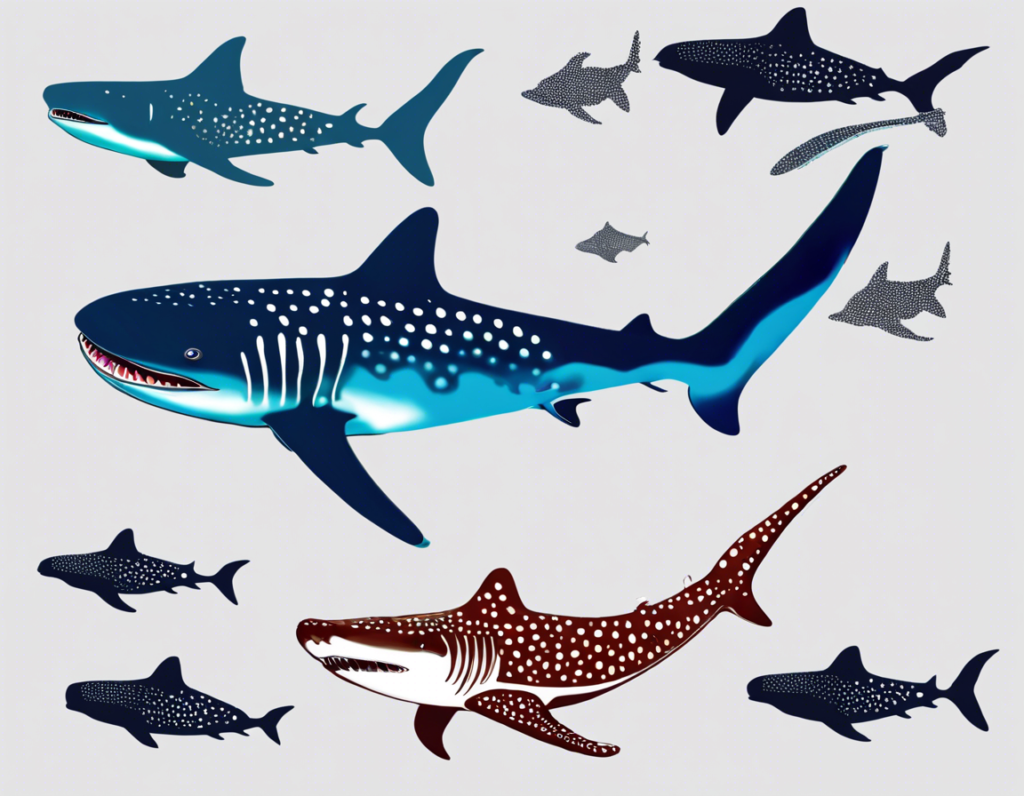
Top 10 Things for Couples to Do While Diving with Whale Sharks:
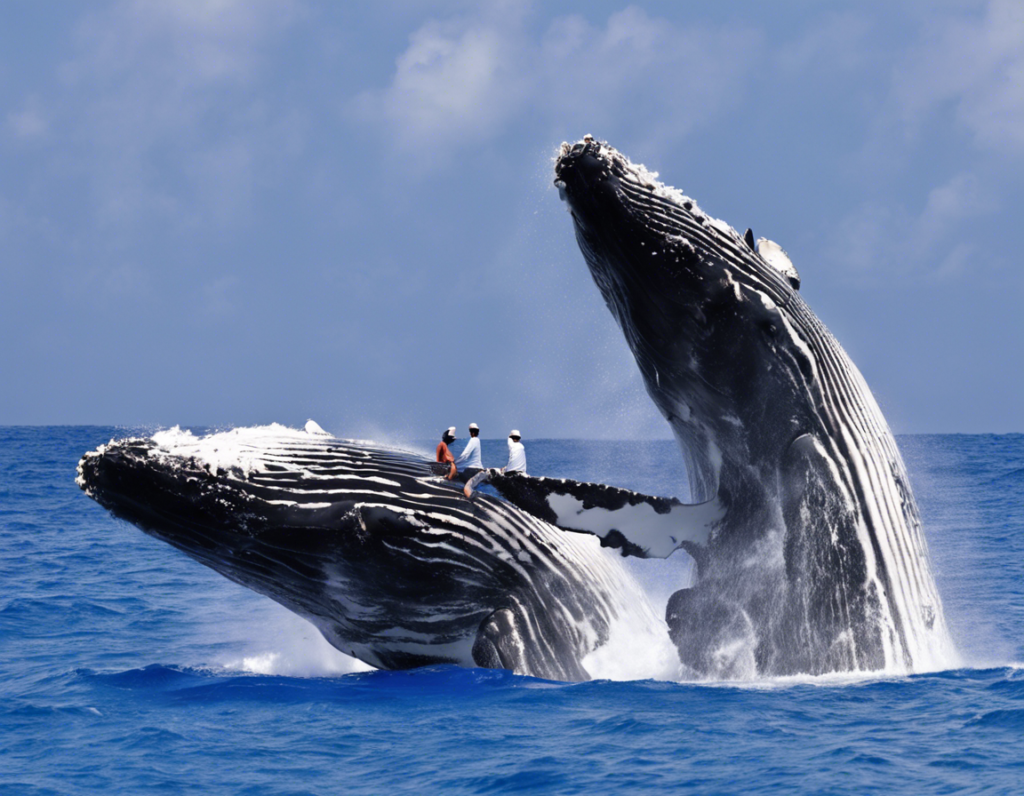
Diving with whale sharks in the Maldives is not just about the thrill of swimming alongside these gentle giants; it’s also an opportunity for couples to create unforgettable memories together. Here’s a list of the top 10 activities couples can enjoy while diving with whale sharks in this tropical paradise.
1. Whale Shark Excursions
Join a dedicated whale shark excursion where you can snorkel or dive alongside these magnificent creatures. Many resorts, like Vilamendhoo Island Resort, offer guided tours that include equipment rental and expert guidance, ensuring a safe and memorable experience. These excursions often allow you to swim with whale sharks in multiple locations, maximizing your chances of encounters.
2. Sunset Dolphin Cruises
After a day of diving, unwind on a romantic sunset dolphin cruise. Many operators offer evening trips where you can watch playful dolphins leap and dance against the backdrop of a stunning Maldivian sunset. It’s the perfect way to relax and enjoy each other’s company after an exhilarating day underwater.
3. Private Beach Dinner
Indulge in a romantic private dinner on a secluded beach. Many resorts offer this intimate experience, complete with candlelight and gourmet cuisine. Imagine dining under the stars, listening to the gentle waves while reminiscing about your day spent swimming with whale sharks.
4. Couples Spa Day
Treat yourselves to a couples spa day at one of the luxurious resorts in the Maldives. Enjoy massages, facials, and other rejuvenating treatments designed to relax and refresh you after your underwater adventures. Many spas offer ocean views, adding to the serene atmosphere.
5. Photography Sessions
Capture your underwater adventures with a professional photography session. Many dive operators offer packages that include underwater photography services, allowing you to document your encounters with whale sharks and other marine life beautifully.
6. Night Diving Adventures
For the adventurous couple, consider night diving! Experience the thrill of exploring the underwater world after dark, where you can encounter nocturnal marine life and see how different the reef looks under the moonlight. This unique experience can deepen your bond as you navigate the ocean together.
7. Island Hopping Tours
Explore nearby islands together on an island-hopping tour. Discover local culture, sample traditional cuisine, and relax on pristine beaches. This is an excellent way to experience more of what the Maldives has to offer beyond just diving.
8. Snorkeling Safaris
If one partner prefers snorkeling over diving, consider joining a snorkeling safari that targets areas known for whale shark sightings as well as vibrant coral reefs teeming with life. This allows both partners to enjoy the beauty of the underwater world at their own comfort levels.
9. Cooking Classes
Engage in a cooking class together at your resort or a local culinary school. Learn how to prepare traditional Maldivian dishes using fresh seafood and local ingredients. This fun activity allows you to bond over food while gaining new skills that you can recreate at home.
10. Stargazing on the Beach
End your days with some stargazing on the beach. The Maldives offers incredibly clear skies perfect for spotting constellations. Bring along a blanket and some snacks, and enjoy each other’s company while marveling at the beauty of the night sky.
Diving with whale sharks in the Maldives is an adventure filled with opportunities for couples to connect and create lasting memories together. From thrilling excursions to relaxing beach dinners, there’s something for every couple looking to enhance their experience in this idyllic paradise. Whether you’re seeking adventure or romance, these activities will ensure your trip is unforgettable!
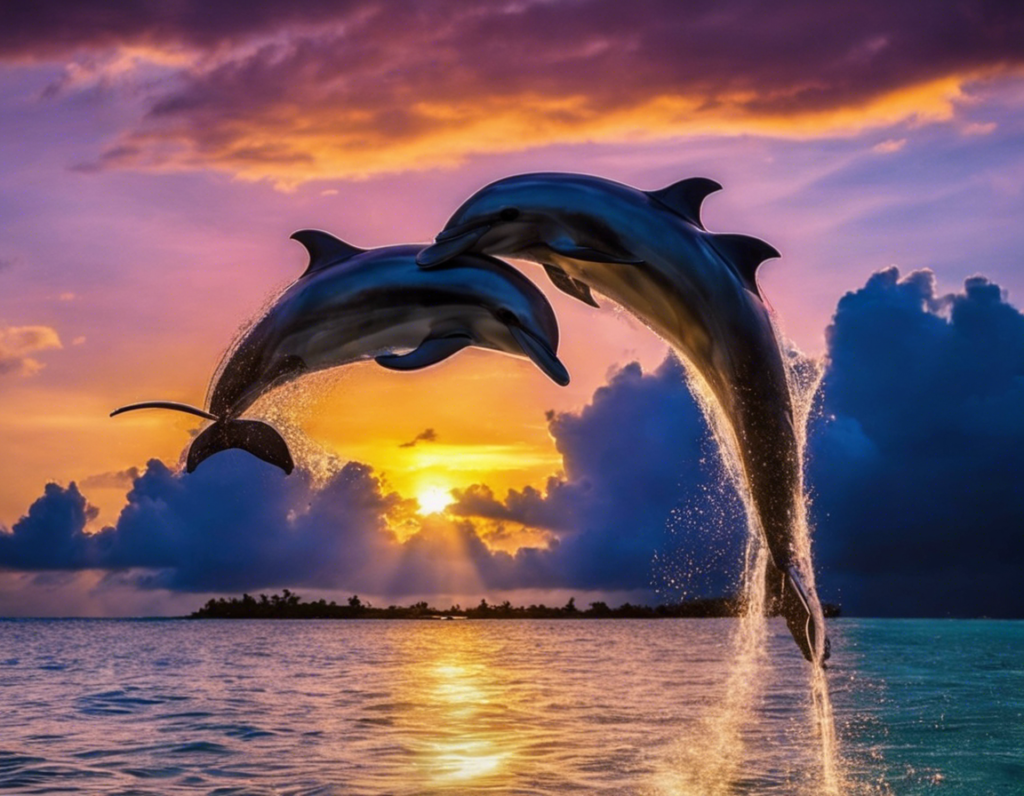
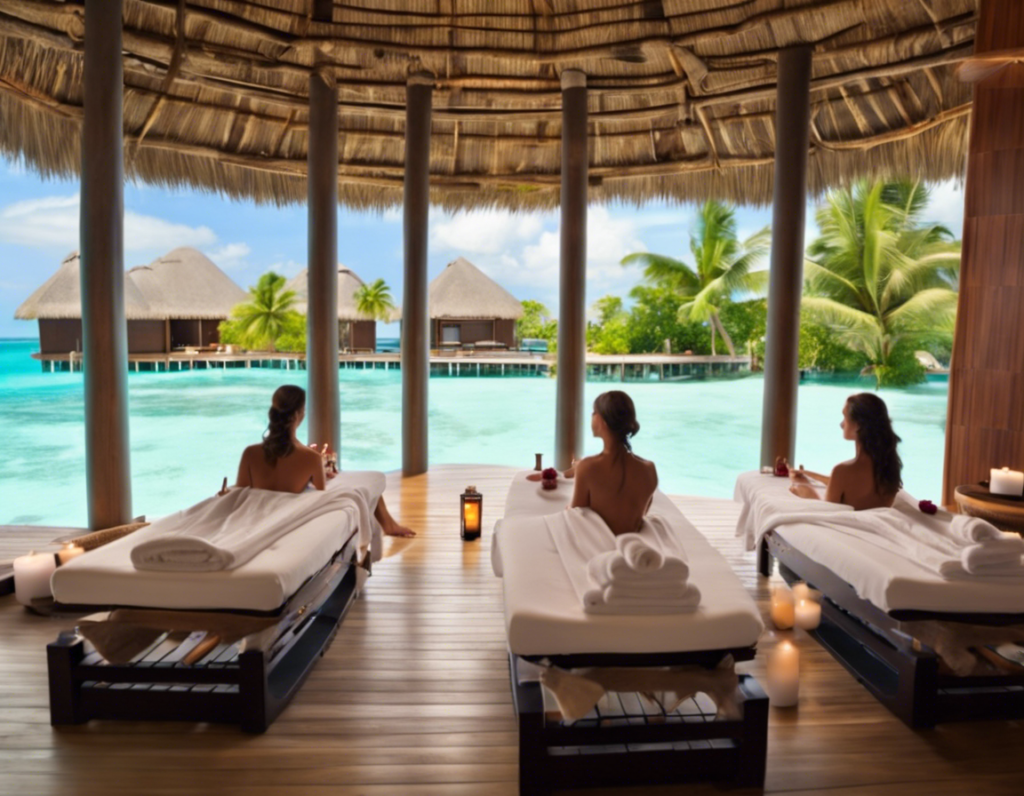
Nightlife and Best Nightclubs:
While the Maldives is primarily known for its stunning beaches and tranquil atmosphere, it also offers a vibrant nightlife scene that caters to those looking to unwind after a day of diving with whale sharks or exploring the islands. Here’s a detailed look at some of the best nightlife spots and nightclubs in the Maldives.

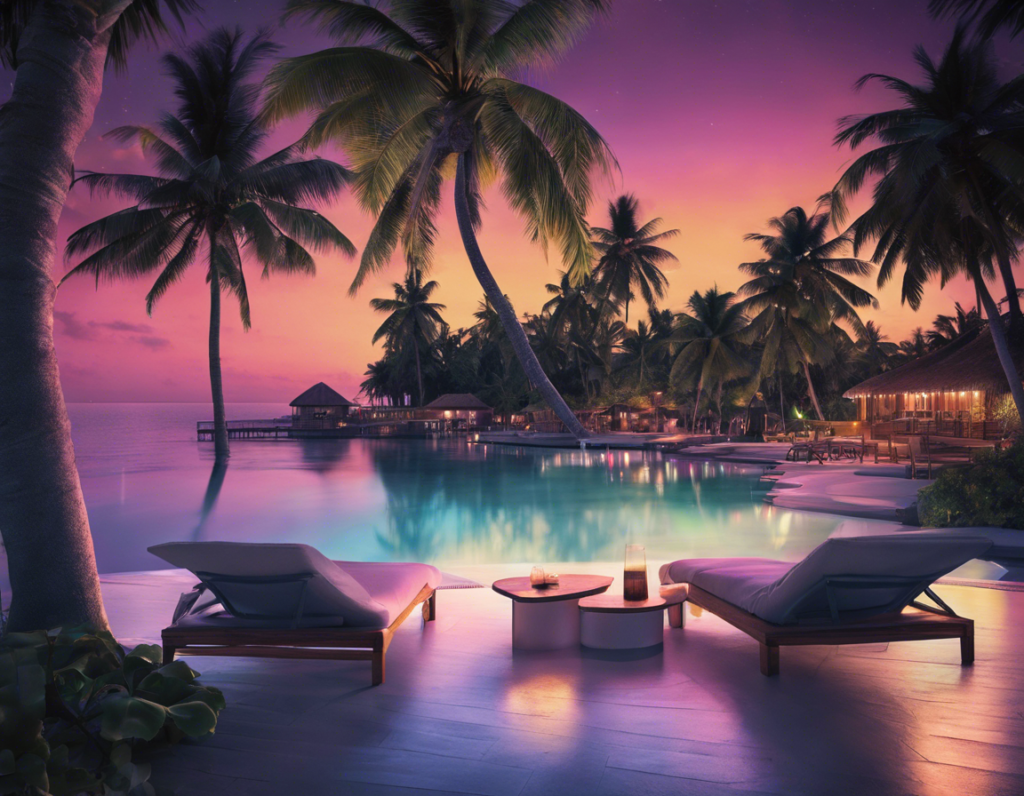
1. Subsix at Niyama Private Islands
Description: Subsix is the world’s first underwater nightclub, located six meters below the ocean’s surface. This unique venue features stunning views of marine life and hosts international DJs, making it a must-visit for party enthusiasts.
Timings: Open Wednesday and Saturday from 9:00 PM to 2:00 AM.
Highlights: Dance surrounded by colorful fish while enjoying a cocktail, creating an unforgettable experience.
2. Kurumba Kandu Bar
Location: Vihamanaafushi, North Male Atoll.
Description: This lively bar offers an open pavilion overlooking the azure waters, complete with day beds and loungers. It features live music and DJ performances, creating a festive atmosphere.
Timings: Open daily from 7:00 PM to 2:00 AM.
Cost: Approximately MVR 900 for two.
3. Babuna Bar at Kuredu Island Resort
Description: Known for its energetic vibe, Babuna Bar hosts live music and themed nights, including the popular White Night Parties on Fridays. The bar offers a wide selection of cocktails and mocktails.
Timings: Open from 9:00 AM to 1:00 AM.
Highlights: Enjoy rocking band performances in an inviting atmosphere.
4. 1 OAK at Finolhu
Description: A popular nightclub featuring a massive dance floor and VIP tables, 1 OAK attracts international DJs and offers a high-energy party experience.
Highlights: Known for its vibrant atmosphere and trendy crowd.
5. 15 Below at W Maldives
Description: This stylish nightclub is located underground and offers an intimate setting with a dance floor and bar. It frequently hosts themed parties and live DJ performances.
Timings: Open Tuesday, Thursday, and Saturday from 7:00 PM to 12:00 AM.
Cost: Approximately MVR 1100 for two.
6. Anchorage Bar at Sheraton Maldives Full Moon Resort & Spa
Description: This beachfront bar provides a relaxed atmosphere with stunning ocean views. It’s perfect for sipping cocktails while enjoying live music or sunset views.
Timings: Open daily from 10:00 AM to 12:00 AM.
Rating: Highly rated for its ambiance and service.
7. Hard Rock Cafe at Crossroads Maldives
Description: A well-known destination for live music, this venue combines the classic Hard Rock vibe with Maldivian flair. It features a restaurant, bar, and outdoor stage for performances.
Highlights: Great for those looking to enjoy familiar food in a lively atmosphere.
8. Moodhu Bar & Restaurant
Location: Reethi Beach Resort, Baa Atoll.
Description: Offering a thatched roof décor with ocean views, this bar is open 24 hours, making it ideal for late-night snacks or drinks while enjoying the serene beach ambiance.
Cost: Approximately MVR 1000 for two.
9. Beach Club at Amilla Fushi
Description: This beachfront venue features live music, themed parties, and delicious food options. It’s perfect for couples looking to enjoy a lively evening by the sea.
10. Soneva Fushi Cinema Paradiso
Description: For something different, enjoy an outdoor movie experience under the stars at Soneva Fushi’s cinema. This unique venue shows classic films in a stunning natural setting.
The nightlife in the Maldives offers a delightful mix of relaxation and excitement, catering to various tastes—from underwater nightclubs to beach bars with live music. Whether you’re dancing beneath the waves at Subsix or enjoying cocktails with ocean views at Kurumba Kandu Bar, there’s no shortage of options for those looking to enjoy their evenings after exploring the breathtaking marine life during the day. Just remember to respect local customs regarding alcohol consumption outside of resorts!
Trending Best Places to Visit:
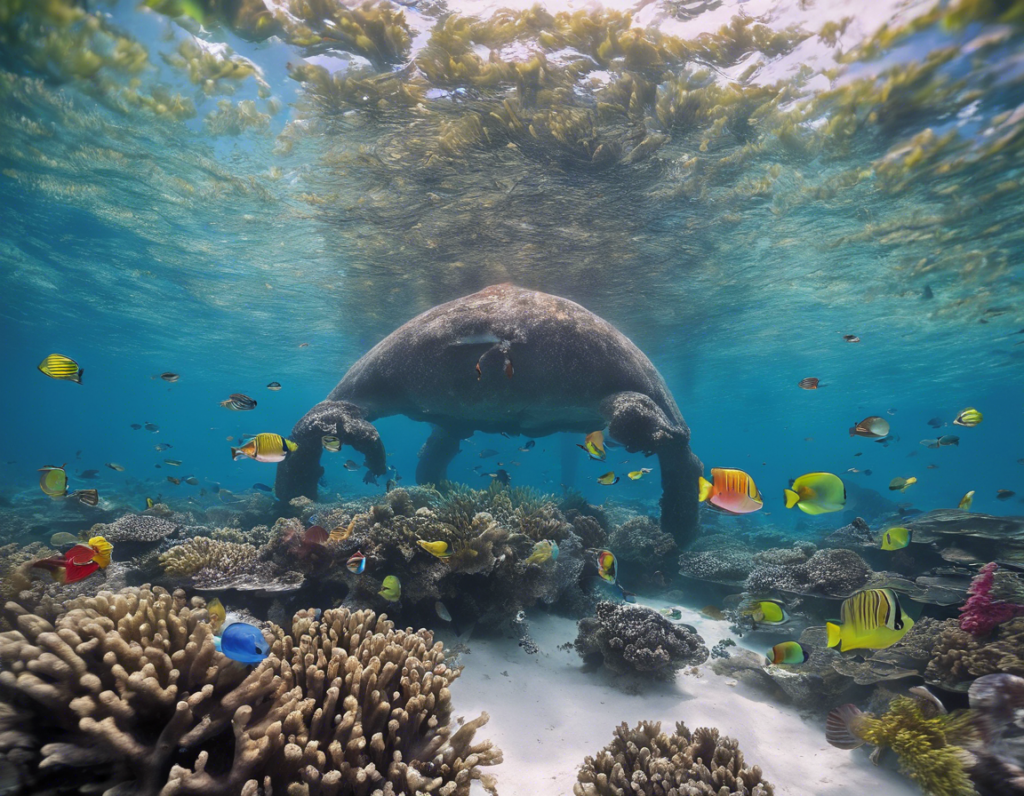
The Maldives is a tropical paradise known for its stunning beaches, crystal-clear waters, and vibrant marine life. While many travelers come for the luxurious resorts and diving experiences, there are several must-visit places that showcase the unique beauty and culture of this island nation. Here’s a look at some of the trending best places to visit in the Maldives.
1. Malé City
Overview: The capital city of the Maldives, Malé is a bustling hub filled with history and culture. Visitors can explore colorful markets, historical sites, and local eateries.
Highlights:
Grand Friday Mosque: This architectural marvel features a striking golden dome and can accommodate up to 5,000 worshippers. It’s a must-see for its beauty and significance.
National Museum: Offers insights into Maldivian history and culture through various artifacts.
2. Vaadhoo Island (Glowing Beach)
Overview: Famous for its stunning natural phenomenon, this beach glows at night due to bioluminescent phytoplankton.
Experience: Walking along the shore as the waves light up with a mesmerizing blue glow is an unforgettable experience.
3. Banana Reef
Location: North Malé Atoll.
Overview: Renowned as one of the best dive sites in the Maldives, Banana Reef is famous for its vibrant coral formations and diverse marine life.
Activities: Ideal for diving and snorkeling, where you can encounter reef sharks, barracudas, and colorful fish.
4. Hanifaru Bay
Location: Baa Atoll.
Overview: A UNESCO Biosphere Reserve, Hanifaru Bay is known for its seasonal gatherings of manta rays and whale sharks.
Best Time to Visit: June to November when plankton blooms attract these majestic creatures.
5. Ithaa Undersea Restaurant
Location: Hilton Maldives Resort & Spa.
Overview: This unique dining experience takes place five meters below sea level, offering panoramic views of the surrounding coral reef.
Cuisine: A blend of Western and Asian flavors in an intimate setting with just 14 seats.
6. Fulhadhoo Island
Overview: Known for its pristine beaches and tranquil atmosphere, Fulhadhoo is one of the less commercialized islands in the Maldives.
Activities: Perfect for snorkeling, scuba diving, or simply relaxing on white sandy beaches away from crowds.
7. HP Reef (Rainbow Reef)
Location: North Malé Atoll.
Overview: A protected marine area famous for its colorful corals and rich marine biodiversity.
Diving Experience: Features swim-throughs, caves, and an array of marine species including turtles and reef sharks.
8. Utheemu Island
Overview: A historically significant island known as the birthplace of Sultan Mohamed Thakrufaanu.
Attraction: Utheemu Ganduvaru, a wooden palace that showcases traditional Maldivian architecture.
9. Dhadimagi Kilhi Lake
Location: Fuvahmulah Atoll.
Overview: This large freshwater lake is surrounded by lush greenery and offers opportunities for swimming and relaxation.
10. Crossroads Maldives
Overview: A multi-resort complex located near Malé that includes various dining options, shopping areas, and entertainment venues.
Highlights:
Offers easy access to local experiences while providing luxurious accommodations.
The Maldives offers a diverse range of attractions beyond its famous beaches and resorts. From vibrant city life in Malé to serene natural wonders like Vaadhoo Island’s glowing beach, there’s something for every traveler. Whether you’re interested in cultural experiences, underwater adventures, or simply soaking up the sun on pristine sands, these trending places will make your visit to the Maldives truly unforgettable.
Top Restaurants and Cuisine:
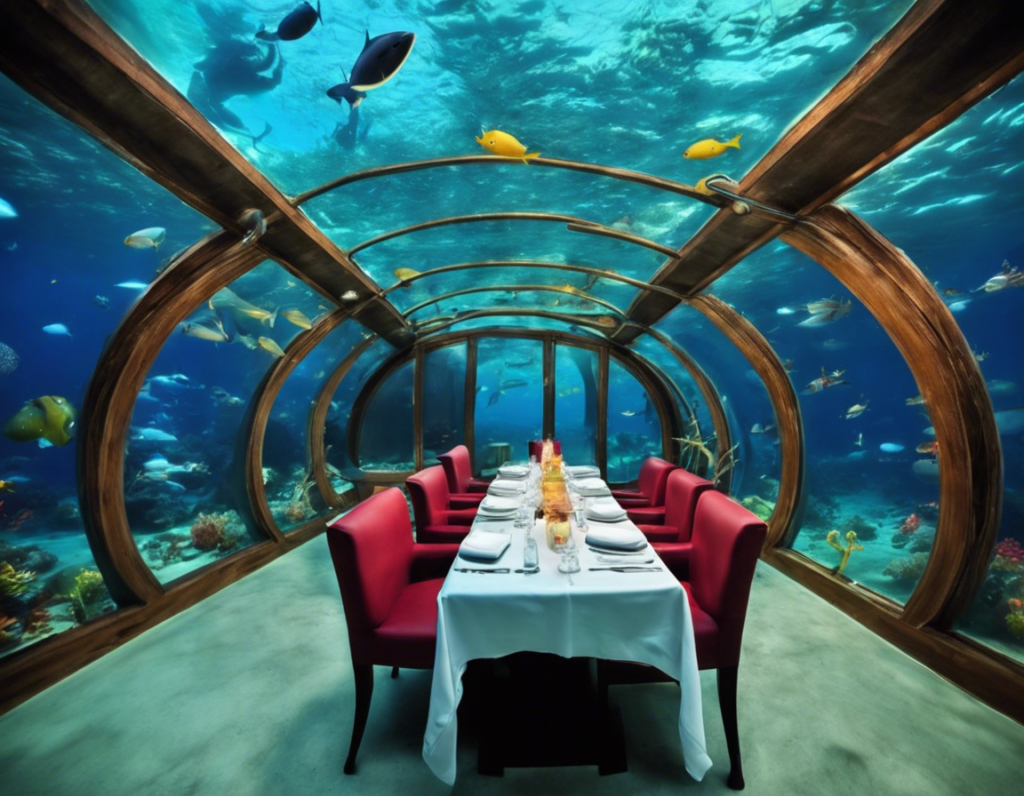
The Maldives is not just a destination for stunning beaches and vibrant marine life; it also boasts a rich culinary scene that reflects its diverse culture and influences. From luxurious dining experiences to local Maldivian flavors, here are some of the top restaurants and cuisine options to explore during your visit.
1. Ithaa Undersea Restaurant
Location: Conrad Maldives Rangali Island
Overview: This iconic restaurant is situated five meters below sea level, offering diners a breathtaking view of the surrounding coral gardens and marine life.
Cuisine: A fusion of Maldivian and European flavors, with highlights like lobster tortellini and smoked mozzarella salad.
Experience: Dining here is a unique experience, as you enjoy your meal while schools of colorful fish swim around you.
2. Reethi Restaurant
Location: One&Only Reethi Rah
Overview: Known for its stunning open-air design, Reethi Restaurant offers a diverse menu divided into three sections: Earth (French and Asian), Fire (organic flavors), and Water (seafood).
Highlights: The ambiance transforms at night with live music, making it a perfect romantic setting.
3. Bokkura Restaurant
Location: Taj Coral Reef Resort & Spa
Rating: 4.8
Overview: This restaurant offers a delightful mix of international cuisine in a beautiful setting.
Timings: Open daily for breakfast from 7:00 AM to 9:30 AM.
4. M6M Restaurant
Location: Malé
Rating: 4.8
Overview: Known for its contemporary design and vibrant atmosphere, M6M serves a variety of dishes with a focus on fresh ingredients.
Timings: Open daily from 8:00 AM to 10:30 PM.
5. The Lighthouse
Location: Baros Maldives
Overview: This elegant restaurant features modern design and offers stunning views of the ocean.
Cuisine: A diverse menu with an emphasis on seafood, complemented by an extensive wine list.
6. Waldorf Astoria Maldives Ithaafushi
Overview: This luxurious resort features multiple dining options, including Asian, Mediterranean, and grill specialties.
Experience: Guests can enjoy fine dining in elegant settings or casual meals with ocean views.
7. Botanica
Location: One&Only Reethi Rah
Rating: 4.9
Overview: This restaurant emphasizes fresh ingredients sourced from the resort’s own garden.
Timings: Open nightly for dinner from 7:00 PM to 10:30 PM.
8. Thila by Kurumba
Overview: A seafood restaurant known for its fresh catch and local flavors.
Experience: The ambiance is enhanced by beautiful ocean views, making it perfect for sunset dining.
9. La Locanda
Rating: 4.9
Overview: This Italian restaurant offers authentic dishes made with fresh ingredients in a cozy setting.
10. Aragu on Velaa Private Island
Overview: Recognized as one of Asia’s top restaurants, Aragu features a European-inspired menu with an Asian twist.
Experience: Offers both three-course and five-course meal options, ensuring a memorable dining experience.
Local Cuisine Highlights
When visiting the Maldives, don’t miss out on trying some local dishes that reflect the island’s rich culinary heritage:
Mas Huni: A traditional breakfast dish made from tuna, coconut, onion, and chili served with flatbread (roshi).
Garudhiya: A fish soup typically made from skipjack tuna, served with rice, lime, chili, and onions.
Fihunu Mas: Grilled fish marinated in spices, often served with rice or flatbreads.
Hedhika: Maldivian snacks that include various fried or steamed items like fish cakes (bajiya) or coconut pancakes (fihunu mas).
Rihaakuru: A thick fish paste made from boiled tuna that is often used as a condiment or spread.
The culinary scene in the Maldives is as diverse as its islands themselves, offering everything from luxurious fine dining experiences to authentic local flavors. Whether you’re indulging in seafood at Ithaa Undersea Restaurant or enjoying traditional Maldivian dishes at local eateries, the food in the Maldives is sure to enhance your overall experience in this tropical paradise.
Top 15 Things for Families to Do While Diving with Whale Sharks:
Family Snorkeling Trips: Explore shallow reefs that are safe for kids.
Visit Marine Parks: Learn about conservation efforts at local marine parks.
Water Sports Activities: Try kayaking or paddleboarding as a family.
Fishing Excursions: Go on a family fishing trip; kids will love it!
Island Picnics: Pack a picnic and enjoy it on a deserted island.
Cultural Experiences: Visit local villages to learn about Maldivian traditions.
Wildlife Watching Tours: Spot turtles, dolphins, and other marine life on guided tours.
Family-Friendly Resorts: Choose resorts that offer kids’ clubs and activities.
Nature Trails: Explore nature trails on various islands together.
Glass-Bottom Boat Tours: Perfect for families who want to see underwater life without diving.
Cooking Classes for Kids: Many resorts offer cooking classes tailored for children.
Scavenger Hunts on Beaches: Organize fun scavenger hunts on sandy shores.
Visit Local Schools or Community Centers: Engage with local children through educational visits.
Wildlife Conservation Workshops: Participate in workshops focused on marine conservation efforts.
Stargazing Nights on the Beach: End your day by stargazing together on quiet beaches.
Transportation Tips:
Navigating the Maldives can be an adventure in itself, given its unique geography comprising over 1,192 islands. Here’s a comprehensive guide to the various modes of transportation available, along with tips to ensure a smooth travel experience.
1. Seaplane Transfers
Overview: Seaplanes are a popular and scenic option for reaching remote resorts. They offer breathtaking aerial views of the atolls and are often the fastest way to travel between islands.
Cost: Prices typically range from MVR 3,500 to MVR 7,000 (approximately $230 to $450), depending on the distance.
Tips:
Book in Advance: Seaplane transfers should be pre-arranged through your resort, as they usually operate only during daylight hours.
Luggage Restrictions: Be aware of luggage weight limits, as excess baggage may need to be transported separately.
2. Speedboat Transfers
Overview: Speedboats are commonly used for resorts located close to Malé. They provide a quick and convenient way to travel.
Cost: Transfers typically range from $25 to $80 per person, depending on distance.
Tips:
24-Hour Service: Unlike seaplanes, speedboats can operate at any time of day, making them ideal for late arrivals.
Check with Your Resort: Most resorts will arrange speedboat transfers for you; it’s often included in your package.
3. Ferry Services
Overview: Ferries are the most economical option for inter-island travel. They connect inhabited islands and are operated by the Maldives Transport and Contracting Company (MTCC).
Cost: Fares range from MVR 30 to MVR 60 (approximately $2 to $4) for public ferries.
Tips:
Schedule Awareness: Ferries run from 6 AM to 6 PM and may not adhere strictly to schedules, so plan accordingly.
Avoid Crowds: Ferries can be crowded, especially during peak times or rainy seasons; avoid traveling with large luggage.
4. Local Taxis
Overview: Taxis are available primarily in Malé and Addu City. They offer a comfortable way to get around urban areas.
Cost: The base fare is around MVR 20 (approximately $1.30), increasing after midnight.
Tips:
Shared Taxis: Don’t be surprised if you share a taxi with other passengers; this is common due to the small size of the islands.
Book Through Your Hotel: For convenience, ask your hotel to arrange a taxi for you.
5. Buses
Overview: Buses operate mainly in Malé and Hulhulé, providing an affordable way to travel short distances.
Cost: Fares start at MVR 3 (about $0.20).
Tips:
Avoid Peak Hours: Buses can become very crowded, especially during rush hours or rainy weather; consider alternative transport if you have luggage.
6. Maldivian Dhoni
Overview: Dhonis are traditional wooden boats used for both transportation and fishing. They offer a unique cultural experience while traveling between islands.
Experience: Riding a dhoni can be leisurely and scenic, allowing you to enjoy the beauty of the Maldives at a slower pace.
7. Yacht Charters
Overview: For those looking for luxury, chartering a private yacht is an exclusive way to explore the islands.
Cost: Prices vary widely based on yacht size and duration of hire.
Tips:
Pre-booking is Essential: Ensure you arrange your yacht charter in advance through your resort or a reputable charter company.
General Tips for Transportation
Pre-book Transfers: Always pre-arrange your transfers from Velana International Airport (MLE) to your resort or local island. This avoids any delays upon arrival.
Stay Informed About Schedules: Whether using ferries or buses, familiarize yourself with their schedules to avoid long waits.
Pack Lightly for Transfers: Given luggage restrictions on seaplanes and speedboats, try to pack efficiently.
Interact with Locals: Engaging with local fishermen or residents can sometimes lead to unique transportation opportunities or insights about island life.
Enjoy the Journey: Transportation in the Maldives often offers stunning views—take time to appreciate the scenery as you travel between islands!
Transportation in the Maldives is diverse and tailored to its unique island geography. By understanding your options and planning ahead, you can ensure smooth travels while enjoying all that this tropical paradise has to offer!
About Wildlife:
The Maldives is renowned for its rich biodiversity, particularly in its marine ecosystems. This tropical paradise, composed of over 1,192 islands, offers a unique blend of terrestrial and marine wildlife that captivates visitors and researchers alike. Here’s an in-depth look at the wildlife and biodiversity of the Maldives.
Marine Biodiversity
Coral Reefs:
The Maldives is home to approximately 4,500 km² of coral reefs, which constitute about 3% of the world’s total coral reef area. These reefs are vital habitats for numerous marine species and are among the most biologically diverse ecosystems on the planet.
There are over 250 species of coral recorded in the Maldives, providing essential support for marine life and contributing to coastal protection.
Fish Species:
The waters surrounding the Maldives host more than 1,100 species of fish, including vibrant reef fish, pelagic species, and larger predators like sharks.
Notable fish species include Napoleon wrasse, barracudas, groupers, and various types of clownfish. The reefs also support populations of manta rays and whale sharks, making it a prime location for diving enthusiasts.
Marine Mammals:
The Maldives is home to at least 21 species of whales and dolphins, including bottlenose dolphins, spinner dolphins, and various whale species such as sperm whales and pilot whales.
These mammals can often be spotted during boat excursions or while diving.
Sea Turtles:
Five species of sea turtles inhabit Maldivian waters: the green turtle, hawksbill turtle, loggerhead turtle, olive ridley turtle, and the leatherback turtle. These turtles are often seen nesting on the beaches or swimming in coral lagoons.
Other Marine Life:
The Maldivian waters are also rich in other marine organisms, including over 400 species of mollusks, various crustaceans, and diverse echinoderms. This includes species like octopuses, squids, giant clams, and sea cucumbers.
Terrestrial Wildlife
While the Maldives is primarily known for its marine biodiversity, it also has some terrestrial wildlife:
Endemic Species:
The land area hosts a few endemic species such as flying foxes (fruit bats) and certain types of geckos. The islands’ limited land diversity is complemented by a variety of migratory birds that visit during different seasons.
Bird Species:
Approximately 170 bird species have been recorded in the Maldives, including both resident and migratory birds. Notable species include seabirds like the Maldivian heron and various terns.
Conservation Efforts
The rich biodiversity of the Maldives faces significant threats from climate change, habitat destruction, overfishing, and pollution:
Climate Change:
Rising sea levels and coral bleaching events threaten the delicate balance of marine ecosystems. Notably, significant coral bleaching occurred during global warming events in 1998 and 2016, leading to substantial losses in coral cover.
Conservation Initiatives:
The Maldivian government has taken steps to protect its marine biodiversity through various conservation programs. This includes establishing marine protected areas where fishing is restricted to promote recovery of fish populations.
Organizations like IUCN (International Union for Conservation of Nature) are actively involved in projects aimed at building resilience against climate change impacts on coral reefs.
Community Involvement:
Local communities are encouraged to participate in conservation efforts through educational programs that promote sustainable practices and awareness about the importance of protecting marine resources.
The wildlife and biodiversity of the Maldives are among its most valuable assets, attracting tourists from around the world who seek to experience its natural beauty firsthand. From vibrant coral reefs teeming with life to unique terrestrial species, this island nation offers a rich tapestry of ecosystems that require ongoing conservation efforts to ensure their survival for future generations. Engaging with local conservation initiatives can enhance your visit while contributing positively to this remarkable environment.
Travel Tips for Diving with Whale Sharks:
Diving with whale sharks in the Maldives is an unforgettable experience, but it requires preparation and awareness to ensure both your safety and the well-being of these magnificent creatures. Here are some essential travel tips to enhance your diving adventure.
1. Choose the Right Time and Location
Best Seasons: Whale sharks can be spotted year-round, but the peak seasons vary by location:
South Ari Atoll: Best from August to November.
Hanifaru Bay: Ideal from May to November when plankton blooms attract large numbers of whale sharks and manta rays.
Research Dive Sites: Familiarize yourself with the best dive sites known for whale shark sightings, such as Maamigili Beyru and Dhigurah.
2. Book Through Reputable Operators
Certified Guides: Always choose dive operators that prioritize safety and adhere to ethical practices. Look for those certified by organizations like the Maldives Whale Shark Research Programme (MWSRP).
Marine Protected Areas: Ensure your operator respects the regulations of Marine Protected Areas (MPAs) where fishing is banned, and interactions with whale sharks are carefully managed .
3. Follow Safety Guidelines
Maintain Distance: Divers and snorkelers should keep a minimum distance of 3 meters (10 feet) from whale sharks to avoid disturbing them .
No Touching or Chasing: Avoid touching or trying to chase the whale sharks; this can stress them and disrupt their natural behavior.
4. Be Aware of Your Environment
Current Awareness: The Maldives often has strong currents, especially during certain seasons. Be prepared for varying conditions and follow your guide’s instructions closely.
Stay Calm: If you encounter a whale shark, remain calm and avoid sudden movements. This will help you enjoy the experience without startling the animal.
5. Respect Marine Life
Eco-Friendly Practices: Use reef-safe sunscreen to protect coral reefs and marine life from harmful chemicals. Avoid using products that contain oxybenzone or octinoxate .
Avoid Flash Photography: Flash can startle marine animals, so use natural light when taking photos underwater.
6. Health and Safety Considerations
Basic Swimming Skills: Ensure you are comfortable in the water; basic swimming skills are essential for snorkeling or diving safely.
Health Precautions: If you have any medical conditions, consult with a healthcare professional before diving. Make sure you’re aware of any health risks associated with diving.
7. Stay Hydrated and Rested
Hydration: Drink plenty of water before and after your dives to stay hydrated, especially in the tropical climate.
Rest Well: Ensure you’re well-rested before diving; fatigue can affect your ability to respond to unexpected situations underwater.
8. Participate in Conservation Efforts
Support Local Initiatives: Engage with local conservation programs that focus on protecting whale sharks and their habitats. Many resorts offer opportunities for guests to participate in conservation activities .
Educate Yourself and Others: Learn about the importance of marine conservation and share this knowledge with fellow travelers to promote responsible tourism.
Conclusion
Diving with whale sharks in the Maldives is a magical experience that requires respect for both the animals and their environment. By following these travel tips, you’ll not only enhance your own experience but also contribute positively to the conservation efforts aimed at protecting these magnificent creatures for future generations. Enjoy your adventure, and remember that responsible tourism is key to preserving this unique marine ecosystem!
Diving with whale sharks in the Maldives offers an unforgettable experience filled with adventure, romance, and family fun. Whether you’re swimming alongside these gentle giants or exploring vibrant coral reefs, every moment spent in this tropical paradise is sure to create lasting memories.
So pack your bags, grab your snorkel gear, and get ready for an adventure that combines breathtaking beauty with thrilling encounters—because diving with whale sharks is not just an activity; it’s an experience that will stay with you forever!




